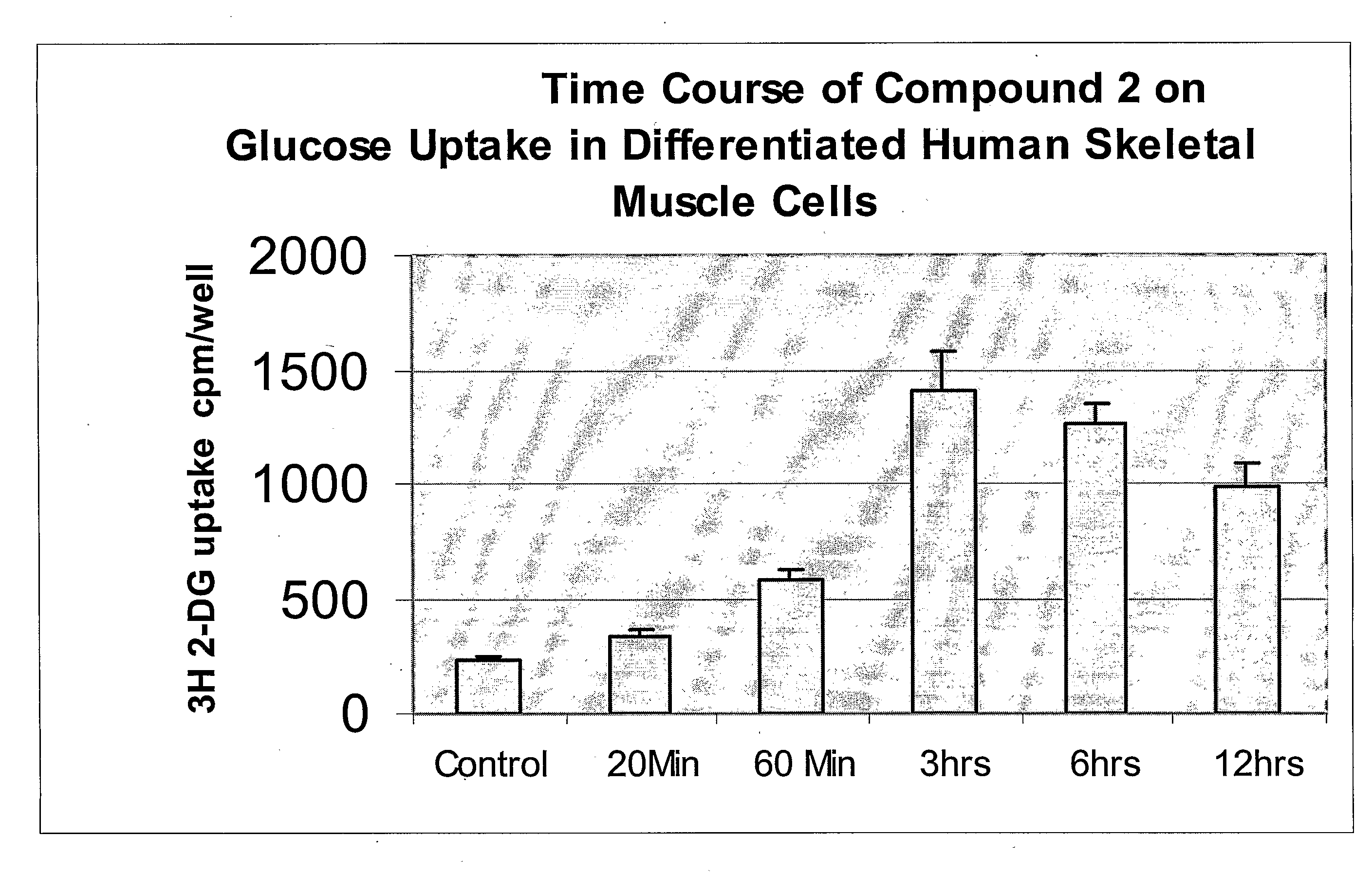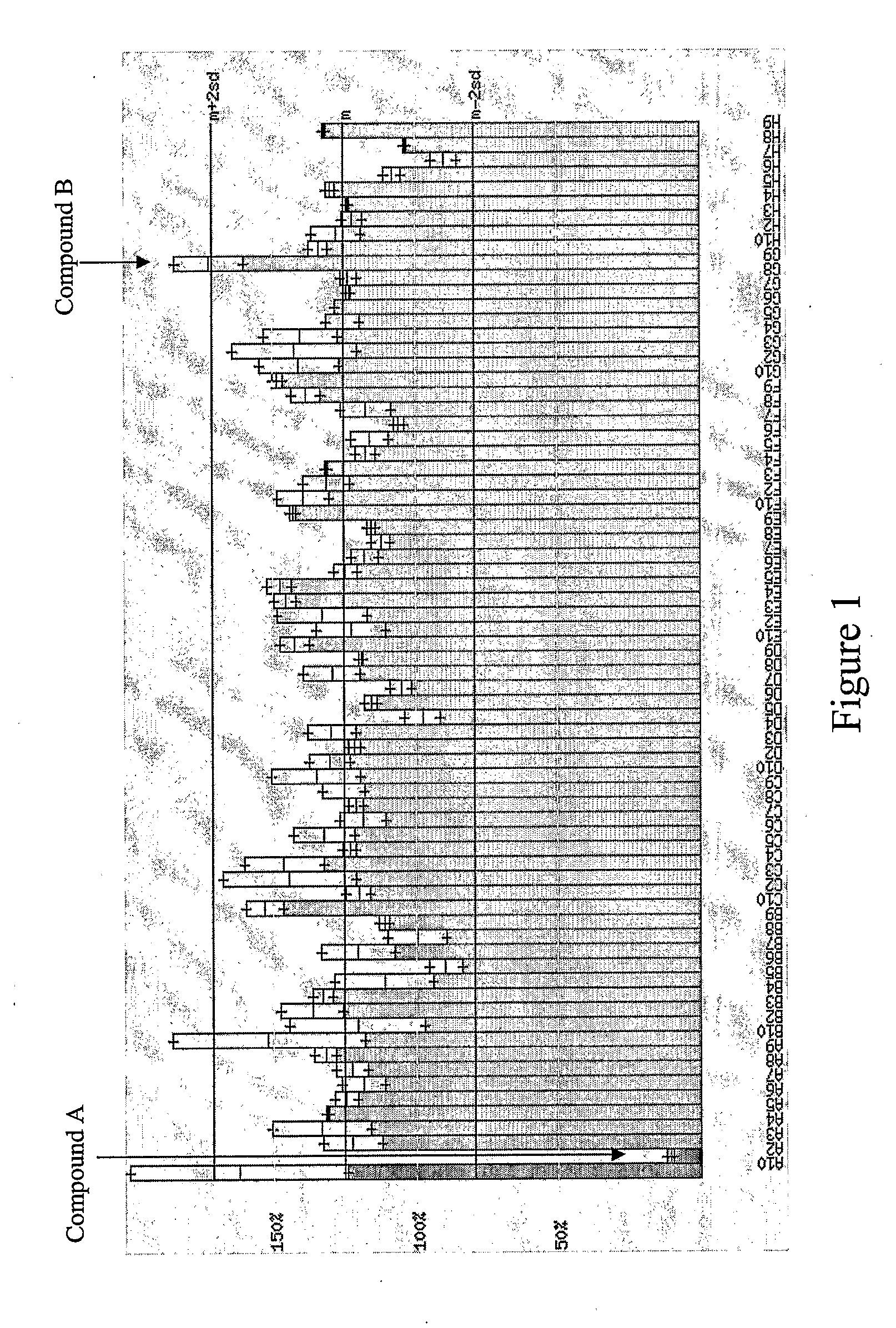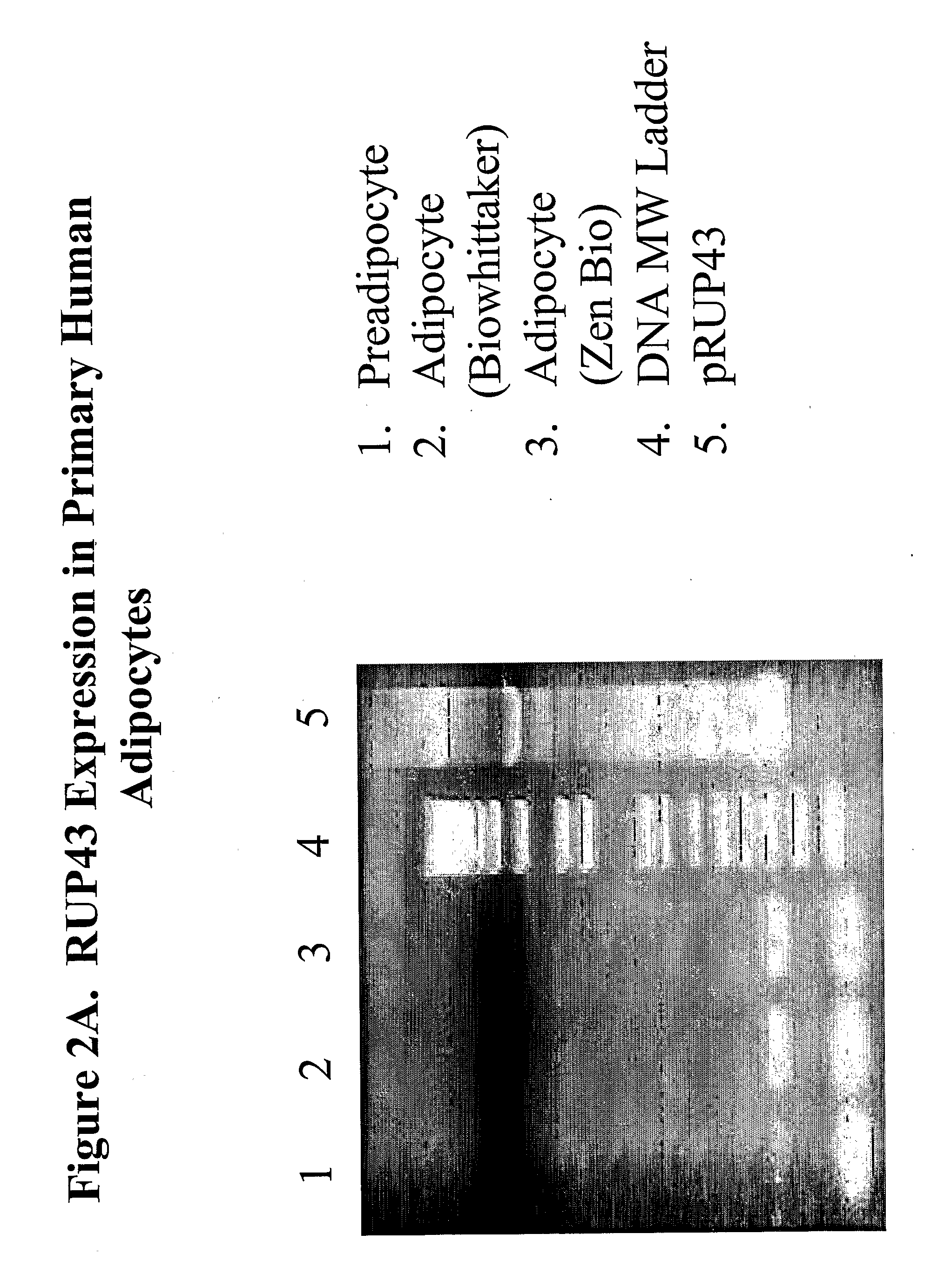Human G Protein-Coupled Receptor and Modulators Thereof for the Treatment of Hyperglycemia and Related Disorders
a human g protein and receptor technology, applied in the direction of drugs, instruments, and disorders, can solve the problems of persistent elevated blood glucose concentration or hyperglycemia, and achieve the effect of increasing the level of camp and increasing the level of map kinase activity
- Summary
- Abstract
- Description
- Claims
- Application Information
AI Technical Summary
Benefits of technology
Problems solved by technology
Method used
Image
Examples
example 1
Full-Length Cloning of Human GPCRs
[0813]Endogenous Human RUP43 (SEQ ID NOs:1 & 2)
[0814]Polynucleotide sequence encoding full-length endogenous human RUP43 (GPR131, e.g. GenBank® Accession No. NM—170699) can be cloned as described here. SEQ ID NO:1 is an endogenous human RUP43 (GPR131) polynucleotide coding sequence that may be cloned as described here. SEQ ID NO:2 is the corresponding encoded endogenous human RUP43 (GPR131) polypeptide.
[0815]Full-length endogenous human RUP43 is cloned by PCR using Platinum PCR SuperMix (Invitrogen catalog # 11306-016) and the specific primers
(5′-primer; SEQ ID NO: 3)5′-GACAAGCATGACGCCCAACAGCACTGGCGAG-3′and(3′-primer; SEQ ID NO: 4)5′-CTTGAATTAGTTCAAGTCCAGGTCGACACTGC-3′
[0816]with human DNA as template. The human DNA may be genomic DNA or cDNA. The cycle condition used is 25 cycles of 95° C. for 40 sec, 60° C. for 50 sec, and 72° C. for 1 min. The 1.0 kb PCR product is cloned into the pCRII-TOPO™ vector (Invitrogen).
[0817]HA / V5His Double Tagged Endoge...
example 2
Preparation of Non-Endogenous, Constitutively Activated Human RUP43
[0822]Those skilled in the art are credited with the ability to select techniques for mutation of a nucleic acid sequence. Presented below are approaches that may be utilized to create non-endogenous versions of human GPCRs. The mutation disclosed here for endogenous human RUP43 (GPR131) is based upon an algorithmic approach whereby the 16th amino acid (located in the IC3 region of the GPCR) N-terminal to a conserved proline (or an endogenous, conservative substitution therefor) residue (located in the TM6 region of the GPCR, near the TM6 / IC3 interface) is mutated, preferably to a histidine, arginine or lysine amino acid residue, most preferably to a lysine amino acid residue.
[0823]By way of illustration and not limitation, a non-endogenous, constitutively activated version of endogenous human RUP43 (GPR131) may be made by mutating alanine at amino acid position 223 of SEQ ID NO:2, preferably to a lysine.
[0824]1. Tra...
example 3
Receptor Expression
[0828]Although a variety of cells are available to the art for the expression of proteins, it is most preferred that mammalian cells or melanophores be utilized. The primary reason for this is predicated upon practicalities, i.e., utilization of, e.g., yeast cells for the expression of a GPCR, while possible, introduces into the protocol a non-mammalian cell which may not (indeed, in the case of yeast, does not) include the receptor-coupling, genetic-mechanism and secretary pathways that have evolved for mammalian systems—thus, results obtained in non-mammalian cells, while of potential use, are not as preferred as that obtained from mammalian cells or melanophores. Of the mammalian cells, CHO, COS-7, MCB3901, 293 and 293T cells are particularly preferred, although the specific mammalian cell utilized can be predicated upon the particular needs of the artisan. In some embodiments, adipocytes or skeletal muscle cells obtained from a mammal may be used. See infra as...
PUM
| Property | Measurement | Unit |
|---|---|---|
| dissociation constant | aaaaa | aaaaa |
| dissociation constant | aaaaa | aaaaa |
| dissociation constant | aaaaa | aaaaa |
Abstract
Description
Claims
Application Information
 Login to View More
Login to View More - R&D
- Intellectual Property
- Life Sciences
- Materials
- Tech Scout
- Unparalleled Data Quality
- Higher Quality Content
- 60% Fewer Hallucinations
Browse by: Latest US Patents, China's latest patents, Technical Efficacy Thesaurus, Application Domain, Technology Topic, Popular Technical Reports.
© 2025 PatSnap. All rights reserved.Legal|Privacy policy|Modern Slavery Act Transparency Statement|Sitemap|About US| Contact US: help@patsnap.com



